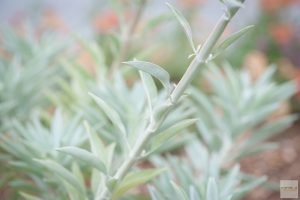Team Snap Blog. September 12, 2012. By Emily Cohen: It’s summer and temperatures across the country are soaring into the triple digits. Most of us are doing everything we can to stay cool and indoors, out of the scorching heat, but it’s ‘high season’ for sports tournaments. That means hoards of young and teenage athletes are participating in baseball, soccer, lacrosse, softball, and other field sport games from early morning until sundown—and often even later, with lighted fields. Read More
Monthly Archives: September 2012
Feast vs. Famine
3 la-natives you’ll be grateful to have in the garden year round
October 9, 2020. Isara Ongwiseth: Los Angeles was once a breadbasket for native nations, and we add layers of resilience to our communities, honor the region’s history, and bring lush beauty to gardens when we choose plants from California’s edible plant palette.
Here are three plant choices we regularly make to ensure our fall gardens aren’t just beautiful – they are delicious!
White Sage vs. Pride of Madera
The fragrant leaves of White Sage can be used in Thanksgiving dinner in any place you may use another edible sage – or experiment with recipes developed to showcase its flavor. They can also be steeped to create an earthy, savory tea. Its flavor tastes similar to a traditional sage. Its fragrance is more savory and less minty than many native California sages – it will be familiar to anyone who has “smudged” a room.
You’ll be grateful for planting White Sage well after Thanksgiving. Native to Southern California, White Sage is uniquely suited to thrive in our gardens, unlike other sages. However, like other sages, it has been used historically for a wide range of medicinal purposes.
Aesthetically, White Sage looks much like Pride of Madeira, it maintains a round, structural shape. It’s bloom-covered spires can reach six foot in height during spring and summer. Adaptable, it will thrive in coastal and chaparral regions as well. Unlike Maderia, it will not invade wildspaces.
Yucca Whipplei vs. Pampas Grass
Why not replace mashed potatoes with Mashed Yucca? Yucca serves as the new starch staple at many farm-to-table establishments and is touted for its nutrient value. While best known for its roots, virtually every portion of Yucca Whipplei, from its blooms to its seeds, is edible at one time of the year or another.
Coming upon a Yucca Whipplei in the wild sparks wonder. Prevalent from the coast to the alpine regions around California, Yucca’s blue-grey architectural foliage can be as much as 6’ feet in diameter where it has space to grow. Its luminescent blooms inspired its common name: Our Lord’s Candle.
Whipplei is a powerful contributor to LA gardens, going above and beyond his edibility to provide for our safety. Once you recognize him, you’ll see Whipplei at our firewise tour homes and almost any garden where there is a steep slope.
Whipplei makes a brilliant exchange for the combustible, invasive Pampas grass, that now fills our wildspaces. While the feathers of Pampas Grass are lovely, we’ve come to see them as a warning sign for fire – and we can’t eat them!
Whipplei is also a great aesthetic alternative to agaves and non-native yuccas. As it likes periods of completely dry soil, it is incredibly water wise. Unlike agave and other yuccas, it roots deeply, serving as a great slope-saver in our more prolific rainy seasons.
Common Yarrow vs. Turf
A wonderful soft herb like tarragon, Yarrow’s flavor could be described as similar to anise or fennel – a perfect “secret ingredient” in seasonal salads, stuffing, and pastas. Like White Sage, Yarrow is also well known as a powerful medicinal plant (Martha Stewart actually included it in her Common-Cold Tea!).
Yarrow’s lacy white, yellow or reddish-pink flowers are blooming now and make beautiful Thanksgiving centerpieces.
As you enjoy the beauty of the cut blooms on your table and the distinctive flavor Yarrow has added to your dishes, consider this: Yarrow can also function as a deliciously soft lawn alternative. Mowing Yarrow inspires it to grow as a low matt of fern-like foliage. Vibrantly green, Yarrow can also look like a traditional lawn from a distance. As a lawn alternative, its tolerance to foot traffic is second only to Carex pansa, and, like the Carex, it is incredibly low maintenance.
Can you imagine if LA’s browned-out medians became street side bloomways? As we combat food scarcity, it’s possible more than the birds and butterflies would be grateful for the meal.


